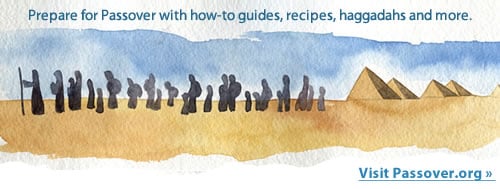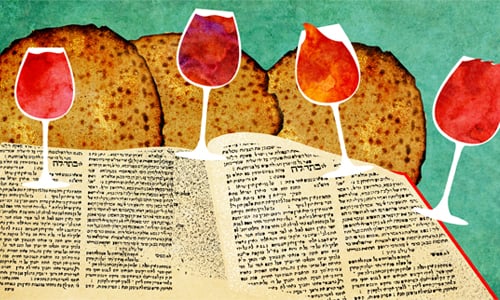
Passover 2022 will be celebrated from April 15-23
- Passover 2022 will be celebrated from April 15 – April 23.
- The first Seder will be on April 15 after nightfall, and the second Seder will be on April 16 after nightfall.
- Passover is celebrated by eating matzah (unleaven bread) and maror (bitter herbs).
- For the duration of the 8 (or 7 days in Israel) of Passover, chametz (leaven) is strictly avoided.
What Is Passover?
The eight-day Jewish holiday of Passover is celebrated in the early spring, from the 15th through the 22nd of the Hebrew month of Nissan, April 15 – 23, 2022. Passover (Pesach) commemorates the emancipation of the Israelites from slavery in ancient Egypt. Pesach is observed by avoiding leaven, and highlighted by the Seder meals that include four cups of wine, eating matzah and bitter herbs, and retelling the story of the Exodus.
In Hebrew it is known as Pesach (which means “to pass over”), because G?d passed over the Jewish homes when killing the Egyptian firstborn on the very first Passover eve.
The Passover Story in a Nutshell
As told in the Bible, after many decades of slavery to the Egyptian pharaohs, during which time the Israelites were subjected to backbreaking labor and unbearable horrors, G?d saw the people’s distress and sent Moses to Pharaoh with a message: “Send forth My people, so that they may serve Me.” But despite numerous warnings, Pharaoh refused to heed G?d’s command. G?d then sent upon Egypt ten devastating plagues, afflicting them and destroying everything from their livestock to their crops.
At the stroke of midnight of 15 Nissan in the year 2448 from creation (1313 BCE), G?d visited the last of the ten plagues on the Egyptians, killing all their firstborn. While doing so, G?d spared the children of Israel, “passing over” their homes—hence the name of the holiday. Pharaoh’s resistance was broken, and he virtually chased his former slaves out of the land. The Israelites left in such a hurry, in fact, that the bread they baked as provisions for the way did not have time to rise. Six hundred thousand adult males, plus many more women and children, left Egypt on that day and began the trek to Mount Sinai and their birth as G?d’s chosen people.
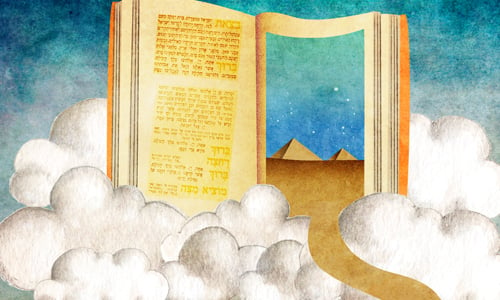
In ancient times the Passover observance included the sacrifice of the paschal lamb, which was roasted and eaten at the Seder on the first night of the holiday. This was the case until the Temple in Jerusalem was destroyed in the 1st century.
How Is Passover Celebrated?
The first two days and last two days (the latter commemorating the splitting of the Red Sea) are full-fledged holidays. Holiday candles are lit at night, and kiddush and sumptuous holiday meals are enjoyed on both nights and days. We don’t go to work, drive, write, or switch on or off electric devices. We are permitted to cook and to carry outdoors (click here for the details).
The middle four days are called Chol Hamoed, semi-festive “intermediate days,” when most forms of work are permitted.
No Chametz
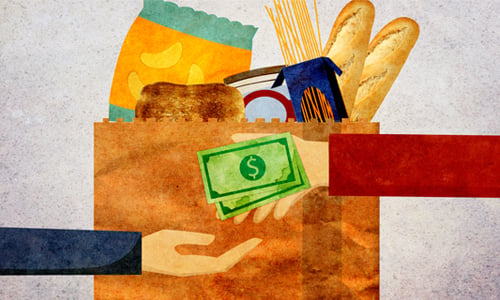
To commemorate the unleavened bread that the Israelites ate when they left Egypt, we don’t eat—or even retain in our possession—any chametz from midday of the day before Passover until the conclusion of the holiday. Chametz means leavened grain—any food or drink that contains even a trace of wheat, barley, rye, oats, spelt or their derivatives, and which wasn’t guarded from leavening or fermentation. This includes bread, cake, cookies, cereal, pasta, and most alcoholic beverages. Moreover, almost any processed food or drink can be assumed to be chametz unless certified otherwise.
Ridding our homes of chametz is an intensive process. It involves a full-out spring-cleaning search-and-destroy mission during the weeks before Passover, and culminates with a ceremonial search for chametz on the night before Passover, and then a burning of the chametz ceremony on the morning before the holiday. Chametz that cannot be disposed of can be sold to a non-Jew (and bought back after the holiday).
Matzah
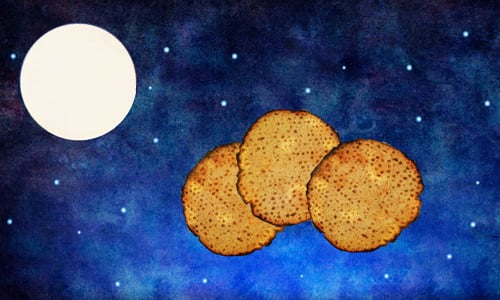
Instead of chametz, we eat matzah—flat unleavened bread. It is a mitzvah to partake of matzah on the two Seder nights (see below for more on this), and during the rest of the holiday it is optional.
It is ideal to use handmade shmurah matzah, which has been zealously guarded against moisture from the moment of the harvest. You can purchase shmurah matzah here.
The Seders
The highlight of Passover is the Seder, observed on each of the first two nights of the holiday. The Seder is a fifteen-step family-oriented tradition and ritual-packed feast.
The focal points of the Seder are:
- Eating matzah.
- Eating bitter herbs—to commemorate the bitter slavery endured by the Israelites.
- Drinking four cups of wine or grape juice—a royal drink to celebrate our newfound freedom.
- The recitation of the Haggadah, a liturgy that describes in detail the story of the Exodus from Egypt. The Haggadah is the fulfillment of the biblical obligation to recount to our children the story of the Exodus on the night of Passover. It begins with a child asking the traditional “Four Questions.”
Read: How to Celebrate Passover
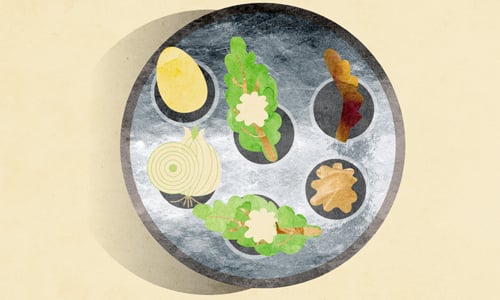
Why Passover Is Important
Passover, celebrating the greatest series of miracles ever experienced in history, is a time to reach above nature to the miraculous. But how are miracles achieved? Let’s take our cue from the matzah. Flat and unflavored, it embodies humility. Through ridding ourselves of inflated egos, we are able to tap into the miraculous well of divine energy we all have within our souls.
Watch this informative video to brush up on the ins and outs of the Passover Seder in simple terms:
The holiday of Pesach, or Passover, falls on the Hebrew calendar dates of Nissan 15-22.
Pesach 2022 (Passover) falls out at sundown on Friday, April 15, and ends at nightfall on April 23.
When Is the Seder?
The Seder feast is held on the first two nights of Passover (just the first night in Israel), after nightfall. Here are the dates of the Seder for the upcoming years:
2022: The nights of April 15 and 16
2023: The nights of April 5 and 6
2024: The nights of April 22 and 23
2025: The nights of April 12 and 13
2026: The nights of April 1 and 2
Note: The Jewish calendar date begins at sundown of the night beforehand. Thus all holiday observances begin at sundown on the secular dates listed, with the following day being the first full day of the holiday. (Thus, the first Passover seder is held on the evening of the first date listed.) Jewish calendar dates conclude at nightfall.
The first two days of Passover (from sundown of the first date listed, until nightfall two days later) are full-fledged, no-work-allowed holiday days. The subsequent four days are Chol Hamoed, when work is allowed, albeit with restrictions. Chol Hamoed is followed by another two full holiday days.
For more in depth information:
